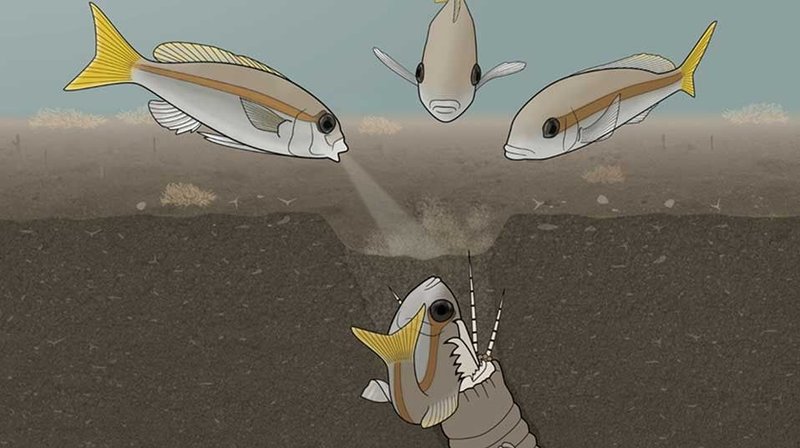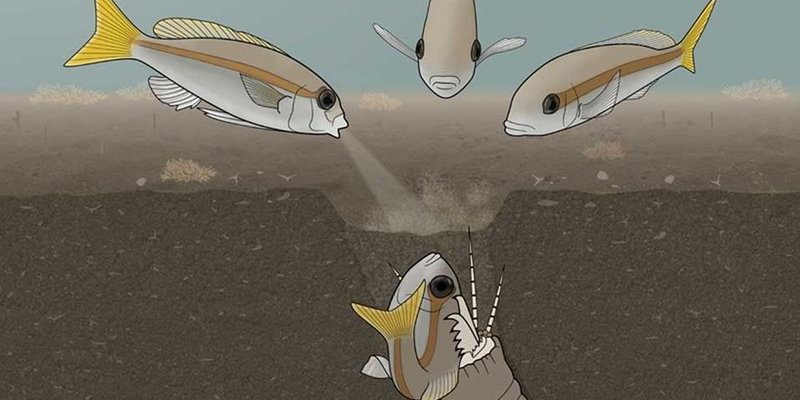
Bobbit worms are like the ninjas of the marine world. They bury themselves in the sand, with only their formidable heads exposed, waiting patiently for an unsuspecting fish to swim by. When they strike, they do so with such speed and precision that it’s both impressive and terrifying. Let’s dive deeper into the world of Bobbit worms and explore their attacks on larger fish, shedding light on their behavior, impact on the ecosystem, and some real-life documented cases.
What Is a Bobbit Worm?
A Bobbit worm, scientifically known as *Eunice aphroditois*, is a type of marine polychaete worm that’s known for its distinct appearance. These worms can grow up to 10 feet long, though most average closer to 3 feet. They possess a long, segmented body and have a head equipped with a set of powerful jaws. These jaws can snap shut quickly, making the Bobbit worm an effective hunter.
You might be wondering how these creatures survive in the ocean. They thrive in sandy or muddy substrates of coral reefs and mangroves, where they can easily camouflage themselves. With the ability to adapt to various marine environments, Bobbit worms play a crucial role in the ocean ecosystem. They help keep fish populations in check, ensuring a balanced food chain. However, their predatory nature raises intriguing questions about their interactions with larger fish.
How Do Bobbit Worms Attack?
Bobbit worms are known for their ambush-style hunting technique. They lay in wait, fully camouflaged in the sediment, and use their keen sense of vibration to detect prey. Large fish, especially those that swim too close, become prime targets for an attack. When the moment is right, the worm extends its powerful jaws and lunges forward with astonishing speed.
Imagine a snapping turtle catching a fish in its beak; the Bobbit worm does it even quicker. It can grab a fish and pull it into its burrow in a blink of an eye. This method is not just effective—it’s a little terrifying too! Research and documented cases have shown that even fish that seem large and powerful are no match for the Bobbit worm’s cunning strategy.
Documented Attacks: Real-Life Examples
There have been several fascinating accounts of Bobbit worm attacks on large fish. One such instance occurred in a tropical reef, where a group of divers observed a Bobbit worm snatch a sizeable parrotfish that swam too close to its lair. The divers were amazed at how quickly the fish vanished, leaving only ripples in the water as evidence of the worm’s swift action.
Another documented incident involved a research team studying the feeding habits of these worms. They found a Bobbit worm that had successfully captured a sizable grouper, a fish known for its strength and size. The researchers noted that the attack happened so fast that they almost missed it. This not only highlights the worm’s predatory skill but also raises questions about the impact of these attacks on the fish population in their habitats.
The Role of Bobbit Worms in the Ecosystem
Bobbit worms, despite their predatory nature, play a significant role in maintaining the health of ocean ecosystems. By preying on large fish, they help regulate fish populations, ensuring that no single species dominates an area. This balance is essential for the overall health of coral reefs and marine environments.
Moreover, Bobbit worms are also a food source for other marine animals. Larger fish, sea turtles, and even some birds hunt for Bobbit worms. This relationship shows how interconnected the marine food web is. Every creature, from the smallest plankton to the largest shark, plays a part in this system, highlighting the importance of every organism—even the ones that bite!
Coping With Bobbit Worms: For Fishkeepers and Divers
If you’re a fishkeeper or a diver, encountering a Bobbit worm might feel daunting. Here are a few tips to keep in mind:
- Be Cautious: When diving, always stay aware of your surroundings. Bobbit worms can blend in, so it’s easy to miss one.
- Avoid Disturbance: Try not to stir up the sand, as this can attract the worm’s attention.
- In Aquariums: If you’re keeping fish, consider the compatibility of your species with Bobbit worms, especially if you have a reef tank.
Understanding these creatures can enhance your experience in marine environments and help you appreciate the diversity of ocean life.
Bobbit worms may not be the most cuddly or friendly creatures in the ocean, but they are certainly fascinating. Their ability to ambush and capture large fish showcases the incredible adaptations of marine life. By understanding their behavior and the role they play in the ecosystem, we can appreciate the complexity of underwater environments.
Next time you think about the ocean, remember the Bobbit worm and its stealthy ways. Whether you’re diving, fishing, or simply curious about marine life, these remarkable creatures remind us that there’s always more than meets the eye beneath the waves.

